Wedding Band Buyer’s Guide
Featured Article by DePrisco Jewelers Staff
Like your relationship, your rings are like no other
DePrisco Jewelers represents many of the world’s finest wedding ring designers and manufacturers and has a wide variety of wedding rings to choose from. Our patient, friendly staff are all career jewelers – GIA certified gemologists who are highly experienced in guiding couples through the choices, customizations (and emotions) required to arrive at a set of rings that match your taste, budget, and lifestyle.
Use the information below to help guide you through the many choices involved in choosing wedding rings. And as always call us if we can help in any way.
1- Choose Your Band Style
The Classic Precious Metal Band
A precious metal band without diamonds, gemstones, engravings, or patterns. Often, a groom chooses a classic band in the same precious metal as his/her bride.
The Classic Carved Precious Metal Band
A precious metal band with stylistic engravings or patterns such as miligrain, filigree, or hand engraved. Finishes included matte, brushed, satin, or hammered.
Diamond Wedding Rings
Any precious metal band set with diamonds and/or gemstones. The style of a Diamond Band varies significantly as determined by the technique used in setting the stones. (see below) The most popular diamond band we sell is a 3-7 stone shared prong platinum ring.

Shared Prong Set Ring
A shared prong ring features a row of diamonds without a metal border to allow maximum light reflection. Each prong is clasping two diamonds in place resulting in a row of diamonds without a metal border. Our most popular women’s wedding ring choice is a 5-stone shared prong set ring. Adding a halo of small diamonds (pave) around the 5-stones provides the ultimate stunner of a ring by making the diamond stones appear even larger.
Pavé/ Bead Set Ring (Scalloped or French)
In a Pavé setting, the diamonds are set within two bars of precious metal with the crowns of the diamond’s level with the surface – Producing a ‘paved’ look. ‘Scalloped’ Pavé settings feature rounded cutouts in the metal on the sides of the band, whereas in ‘French’ Pavé settings metal the cutouts are U or V-shaped. Both styles minimize the amount of visible precious metal, exposing the sides of the diamonds to create increased light refraction for added shimmer.

Channel Set Ring
Diamonds are set within in a ‘channel’ secured between tiny grooves on each side of the precious metal. Princess (square) and emerald-cut diamonds are often used in channel settings because these shapes sit flush against each other. When round diamonds are channel set, triangular-shaped spaces usually appear in the corners between the stones, creating a distinctive look. Channel settings have become an increasingly popular style in ring design.
Bezel Set Ring
The stones are surrounded by precious metal leaving the crown (the top) of the diamond visible, while the rest is hidden. Bezel set stones are an excellent choice for active lifestyles and hands-on or professions such as a doctor, nurse, or chef.
Burnish, (or Flush or Gypsy Set)
Flush set diamonds are set into the band so that no part of the diamond protrudes beyond the surface. Stones are set into the metal directly by countersinking into the metal and burnishing the edges around the stone making the ring a highly wearable choice for active lifestyles and hands-on or professions such as a doctor, nurse, or chef.
Anniversary Bands
Similar to an eternity band but the diamonds go halfway around the ring.
Eternity/Infinity Bands
An eternity band is a diamond band where a continuous line of identically cut diamonds wraps entirely around the ring. Eternity bands typically are given as a gift on a significant anniversary.
Stackable Bands
A current trend in wedding band style is the wearing of two, three, or more complementary rings stacked together on a single finger. Mixing stones, textures, metals, and colors are all fair game when designing a stackable ring set. Often the engagement ring is worn as a standalone piece on the right hand, with the stacked wedding bands on the actual ring finger, or they can all be layered together for the creative expression of individual style.
Choose Your Precious Metal
Platinum
A precious metal, platinum is more expensive and rare than gold, retains its brilliance, never requires relating, and well suited to sensitive skin. Because of its strength, platinum is a popular choice for setting diamonds.
18k Yellow Gold
Classic yet fashionable, yellow gold achieves its warm patina from the red of copper and the green hue of silver. Gold is resistant to rust, tarnish, and corrosion. Although gold is very strong, it’s also the most malleable of all precious metals.
18k White Gold
Beautiful, durable, and long-wearing, white gold is a popular choice for wedding bands. It is corrosion and impact-resistant and provides an excellent backdrop for diamonds. White gold is made by alloying (mixing) gold with nickel or palladium, copper, and zinc. People allergic to nickel should avoid white gold alloyed with this metal.
18k Rose Gold
The beautiful pink hue of rose gold is created by alloying (mixing) gold with a copper alloy.
Titanium
Incredibly strong, durable, and hypo-allergenic with a darker color and lighter weight.
Tungston
Exceptionally strong, scratch-resistant, and hypoallergenic. Tungsten Carbide does not tarnish and is substantially heavier in weight when compared to other metals. A downside to tungsten’s hardness, wedding bands made from this metal can’t be personalized, modified, or resized.
Sterling Silver
Sterling silver rarely used for wedding bands as it is soft, can scratch, and takes on an aged appearance.
Common Metal Finishes
- Polished
- Satin
- Brushed
- Wire Brushed
- Rippled
- Hammered
- Stone/Sandblasted
Band Profile, Fit & Millimeter Width
While there is no ideal width for a wedding band, most bands are between 2 and 6 millimeters. Finger size plays a part in choosing a ring’s width. Smaller fingers can be overwhelmed by wider and heavier rings. Longer fingers or bigger hands can opt for wider widths designs. You may want to scale down or scale up your width depending on the size of your fingers.
Comfort-Fit
Rounded interior and an oval cross-section so that less metal touches the finger resulting in a comfortable feel.
Standard Fit
Standard fit bands have a straight interior and do not have the extra dome of metal provided by comfort fit wedding bands
Additional Fits Include:
- Court
- Beveled
- Concave
- D-Shape
- Flat
- Grooved
Trends: Customizing Your Rings
Couples-to-be have become much more adventurous when it comes to choosing wedding bands. Braided bands, detailed patterns, geometric shapes, asymmetrical designs, mixing of precious metals, stacking of three or more bands together and colored gemstones are all in the mix. It’s not about chasing trends; it’s about discovering your unique personal style and capturing the uniqueness of your relationship.

